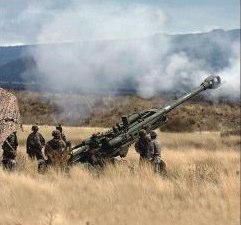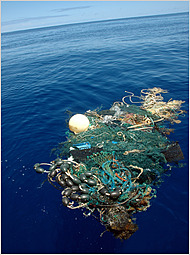Blog
News, updates, finds, stories, and tidbits from staff and community members at KAHEA. Got something to share? Email us at: kahea-alliance@hawaii.rr.com.
- Lawsuit: Hawaii Swordfish Fishery Expansion Jeopardizes Turtle Survival
- Suit Filed to Stop Hawaii Longline Fishery From Tripling Sea Turtle Kill
Deadly Hooks Also Snag Whales, Seabirds, and Sharks - Conservation Groups File Suit Challenging
New Rule Allowing Hawai`i Swordfish Fleet to Triple Its Catch of Sea Turtles
Ka Makani Kaiaulu o Wai'anae
From our friends at AFSC, about a great summer learning opportunity for high-schoolers on O’ahu:
We are Ka Makani Kaiaulu o Wai’anae. We are learning how to promote environmental justice in Wai’anae.
We know there is a problem – environmental racism.
We swim and play in these waters. We eat food from the land and sea here. We all have family members who are sick with asthma or cancer.
We want environmental justice.
1. Stop or reduce all harmful impacts, not just the streams, but the sources of contamination: landfills, military and industry.
2. We want the clean up of all the contaminated sites.
3. We demand a healthy environment for our community.
A healthy environment is a human right!
>><<
Ka Makani Kaiaulu o Wai’anae is a summer youth environmental justice organizing training institute for youth from the Wai’anae coast to learn cenvironmental justice and ommunity organizing skills.
The program is geared to youth (age 15 – 19) from Wai’anae who care about the health and well being of their families, communities and the ‘aina. Applicants must be committed to learning community empowerment skills and using those new skills to help their community and the environment become healthier.
We will learn about issues affecting the Wai’anae community, social justice movements in Hawai’i and around the world, the basics of making positive social change, and digital story telling as a medium for shaping the vision and plan for the future of our community.
The Ka Makani Kaiaulu o Wai’anae Institute runs four weeks – June 21 through July 16, 2009, weekdays from 9am to 2pm.
Most activities will take place at the Leeward Community College Wai’anae office (86-088 Farrington Hwy, Suite 201, Wai’anae, HI 96792, Phone: 696-6378). The class will take field trips to help students better understand the issues affecting Hawai’i and the depth and scope of doing this work.
Why should you join other students this summer in this life changing experience? Wai’anae is under attack. It is an assault against the community and against the ‘aina, with military bombs and toxic chemicals, contaminated landfills, water pollution, chemical weapons, destruction of cultural sites, rising costs of living and growing numbers of houseless families. The Ka Makani Kaiaulu o Wai’anae Institute will give the selected candidates a way to learn skills for making grassroots community change and a forum to present their ideas on how to improve conditions for peace and justice and environmental sustainability.
Program eligibility
* Must be between the ages of 15-19.
* Must be self-motivated and able to work well in a team towards a common goal.
* Must have the desire to protect the environment and the health and well being of the Wai’anae community.
Participants who successfully complete the program will receive a $200 stipend.
Interested? Email Kyle Kajihiro at KKajihiro@afsc.org
Hawaiʻi Undersea Military Munitions Assessment
Video and article on the Hawai’i Undersea Military Munitions Assessment–the search to find legacy dumped munitions around Hawai’i, in the UH Malamalama: “…the first study of possible chemical weapons sites in Hawaiʻi and the most comprehensive study ever taken in U.S. waters…”
http://www.hawaii.edu/malamalama/2010/04/underwater-ordnance/
NRC admonishes U.S. Army for DU Monitoring Plan

Now that the U.S. Army has admitted to the presence of depleted uranium at its Hawaiʻi live fire training ares, the Army has applied to the NRC for a permit to possess DU at Pohakuloa Training Area. If granted, the permit would allow remains of depleted uranium spotter rounds from the Army’s cold-war-era Davy Crockett nuclear howitzer on site at the training area. The army had denied the presence of depleted uranium in Hawaiʻi until a citizen’s group unearthed an e-mail about their discovery in 2006.
Last week, the Big Island Weekly reported on the NRC’s findings on the U.S. Army’s monitoring plan–a plan intended to detect potential impacts from so-called “fugitive dust”:
The U.S. Army’s plan to monitor the air over Pohakuloa Training Area for depleted uranium has drawn sharp criticism from some Native Hawaiians, environmentalists, activists and independent experts. Now the Army has gotten an admonishment from the Nuclear Regulatory Commission.
“We have concluded that the Plan will provide inconclusive results for the U.S. Army as to the potential impact of the dispersal of depleted uranium (DU) while the Pohakuloa Training Area is being utilized for aerial bombardment or other training exercises,” wrote Rebecca Tadesse, Chief of the NRC’s Materials Decommissioning Branch, in a recent letter to Lt. General Rick Lynch, who heads the Army’s Installation Management Command.
See full Article: “NRC to Army: DU monitoring plan won’t work“
Hawaiians, mountain in 'Avatar'-like struggle
From Marti:
Great editorial in the Sacramento Bee yesterday about the analogies between the struggle depicted in the movie Avatar and the real world struggle to protect the last pristine plateau of Mauna Kea. Here’s a quote:
The California astronomers’ “unobtanium” quest – research papers revealing “the secrets of the universe” and identifying planets beyond our solar system – is certainly more noble than mining minerals, but it’s another example of promoting one culture’s notion of progress by overriding another’s reverence for the land. As in the movie, behind the Mauna Kea invaders stands the big money of a starry-eyed entrepreneur, Intel co-founder and telescope donor Gordon Moore.
Particularly rich was the comment posted by Richard Ha about the importance of process. Totally agree, Uncle, which is why we oppose a plan to manage the summit conservation district that is written by the lead-developer of the summit. Just as one example, the plan puts no limit on the number of telescopes that could be built on the summit.
This is not surprising. For decades, the University of Hawaii has promised to better protect the natural and cultural resources of the summit while actively destroying them. This TMT+CMP combo is just the latest example.
Triple Sea Turtle Kill? A'ole.
Today, conservation groups Turtle Island Restoration Network, Center for Biological Diversity, and KAHEA, represented by Earthjustice, filed a lawsuit in federal district court in Honolulu, Hawai`i challenging a new federal rule allowing the Hawai’i-based longline swordfish fishery to catch nearly three times as many loggerhead sea turtles as was previously permitted. The lawsuit challenges a rule issued by the National Marine Fisheries Service on December 10, 2009, which allows the fishery to fish without any limitation on the amount of fishing it can do, except that it must stop if and when it catches the authorized number of turtles. Until now, there were limits on the number of longline sets that could be fished, as well as a lower number of turtles that could be taken. With the new rule, federal fishery managers have created an endangered turtle derby. Federal fishery managers project that the fishery will eventually expand to about three times the size it’s been for the past six years, leading to increased bycatch not only of turtles, but of marine mammals and sea birds as well.
To read rest of article click here
Click below to read more!
NEW DUMP OPEN! Loc: 1,000 miles northeast of Hawaii, Pacific Ocean
The Pacific garbage patch is so large it cannot be precisely measured. It is estimated to be twice the size of Texas and one of five in the world. Out of sight, out of mind? I think not. 
Light bulbs, bottle caps, toothbrushes, Popsicle sticks and tiny pieces of plastic, each the size of a grain of rice, inhabit the Pacific garbage patch, an area of widely dispersed trash that doubles in size every decade and is now believed to be roughly twice the size of Texas. But one research organization estimates that the garbage now actually pervades the Pacific, though most of it is caught in what oceanographers call a gyre like this one — an area of heavy currents and slack winds that keep the trash swirling in a giant whirlpool.
PCBs, DDT and other toxic chemicals cannot dissolve in water, but the plastic absorbs them like a sponge. Fish that feed on plankton ingest the tiny plastic particles. Scientists from the Algalita Marine Research Foundation say that fish tissues contain some of the same chemicals as the plastic. The scientists speculate that toxic chemicals are leaching into fish tissue from the plastic they eat.
The researchers say that when a predator — a larger fish or a person — eats the fish that eats the plastic, that predator may be transferring toxins to its own tissues, and in greater concentrations since toxins from multiple food sources can accumulate in the body.
It may be out of sight, but it should be on your mind. After all, the effects could end up in your body.
For the captain’s first mate, Jeffery Ernst, the patch was “just a reminder that there’s nowhere that isn’t affected by humanity.”
To read the rest of the article, click here.
Mauna Kea- Request for contested case hearing on management plan
From Melissa-
Tomorrow, we along with others will plead our case at the Board of Land and Natural Resource meeting for a contested case hearing on the Mauna Kea Comprehensive Management Plan.
Mauna Kea Anaina Hou, The Sierra Club-Hawaii, The Royal Order of Kamehameha I, KAHEA: The Hawaiian Environmental Alliance, Dwight J. Vincente and Clarence Kukauakahi Ching have submitted a request for a contested case hearing on the plan.
Robert Harris, executive director of the Sierra Club, said that after the plan was approved in April Mauna Kea was chosen for a $1.2 billion Thirty Meter Telescope project.
“Our position is we’re not sure you should be approving new telescopes until this comprehensive management plan is finalized,” Harris said. “If you are going to call this a comprehensive management plan, I think you’re going to have to take into account future development and this plan specifically doesn’t address any development whatsoever.”
Department of Land and Natural Resources staff are recommending against a contested case hearing, saying there are no laws or rules requiring one because of the board’s approval of the plan and that the petitioners have no property interest in the project.
“The (comprehensive management plan) does not permit or authorize any new land use of development on Mauna Kea, including telescope projects,” the recommendation said.
Marti Townsend, program director for KAHEA, said there is a public interest in the protection of public trust resources. More time is needed to develop the plan and get public input, she said.
The DLNR says the acceptance of the plan doesn’t facilitate new construction but Townsend said she thinks it does, especially in light of the recent announcement of the Thirty Meter Telescope project.
“That was our concern all along — that we’re rushing through the management plan process in order to accommodate the TMT and so it’s really a development plan,” Townsend said.
To read full article click here.
The meeting will be held tomorrow (August 28, 2009) at 9:30 in the DLNR Board Room 132 on the first floor of the Kalanimoku Building at 1151 Punchbowl St. The Board Room is located on the makai (ocean) side of the building.





